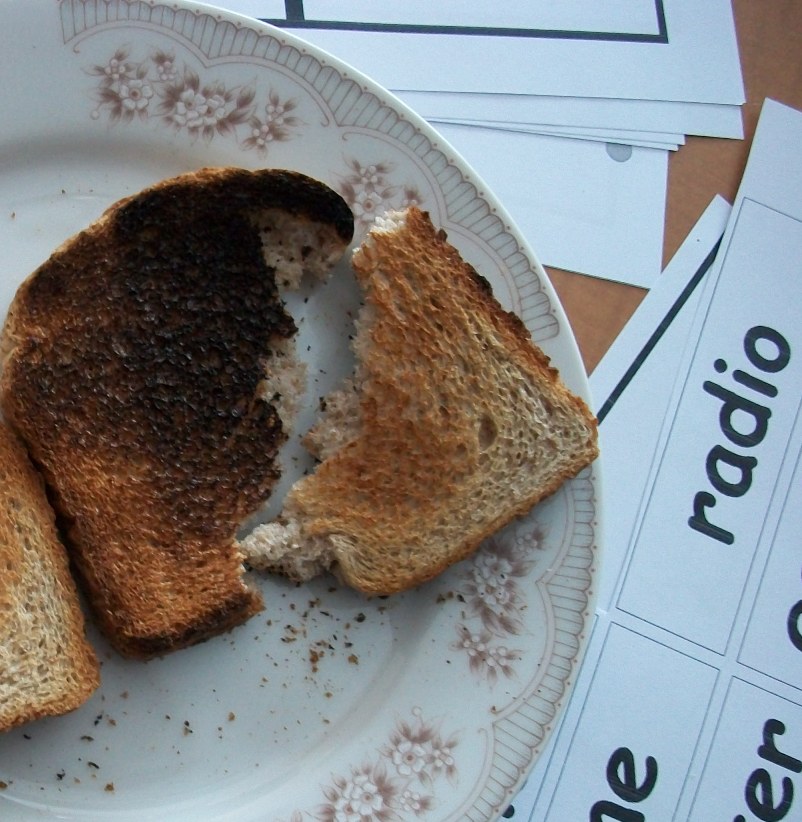DUE TUESDAY, MARCH 17, 2015(worth 40% of term 3 lab)
Solve all three kitchen chemistry puzzles.
1. Only One Side is Burnt--- How and Why
(a) Without messing with your toaster, and without adding anything to the toast, recreate the following pictured situation, where the unburnt piece is actually the other side of the same toast.
(b) explain how you did it,
(c) Photograph yourselves with the picture as proof that you actually did it
(c) explain why it worked. It's related to a basic chemistry concept that we covered.
2. The Chemistry of Spaghetti
(a) Before absorbing water, the protein and embedded starch granules of the pasta are too hard. Is this true? Give a reference.
(b) As both nutrients (protein and starch) absorb water, the starch swells up but a network of intermolecular bonds keeps the starch contained. What type of molecules are forming that network?
(c) If you overcook the pasta, the granules will break out of the network, cling to the surface of the noodles and make them sticky. Can this be prevented? The network is strongest at a slightly acidic pH, so Herve This recommended adding 15 ml of lemon juice to the pot of cold water. Try it and compare and contrast your observations with and without the lemon juice.
(d) Give the exact cooking time and amount of pasta.
3. The Perfectly Centered Hard Boiled Egg
If while making a hard-boiled egg, you rotate the egg once a minute for 5 minutes, turn off the heat, and leave the egg in the pot with the lid on for 5 more minutes, you will create a perfectly centered hard boiled egg.
(a) Try it and photograph yourselves with the hard boiled egg to prove you actually did it.
(b) Explain why the trick works. Which two chemistry concepts are involved?
